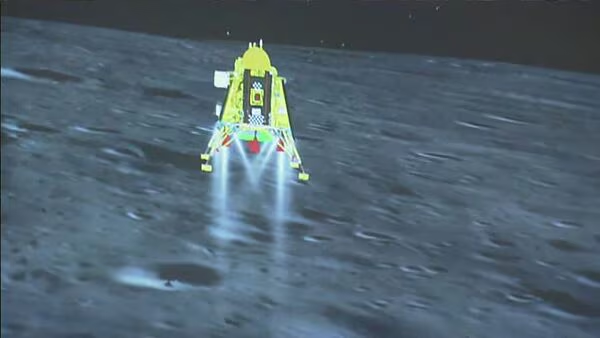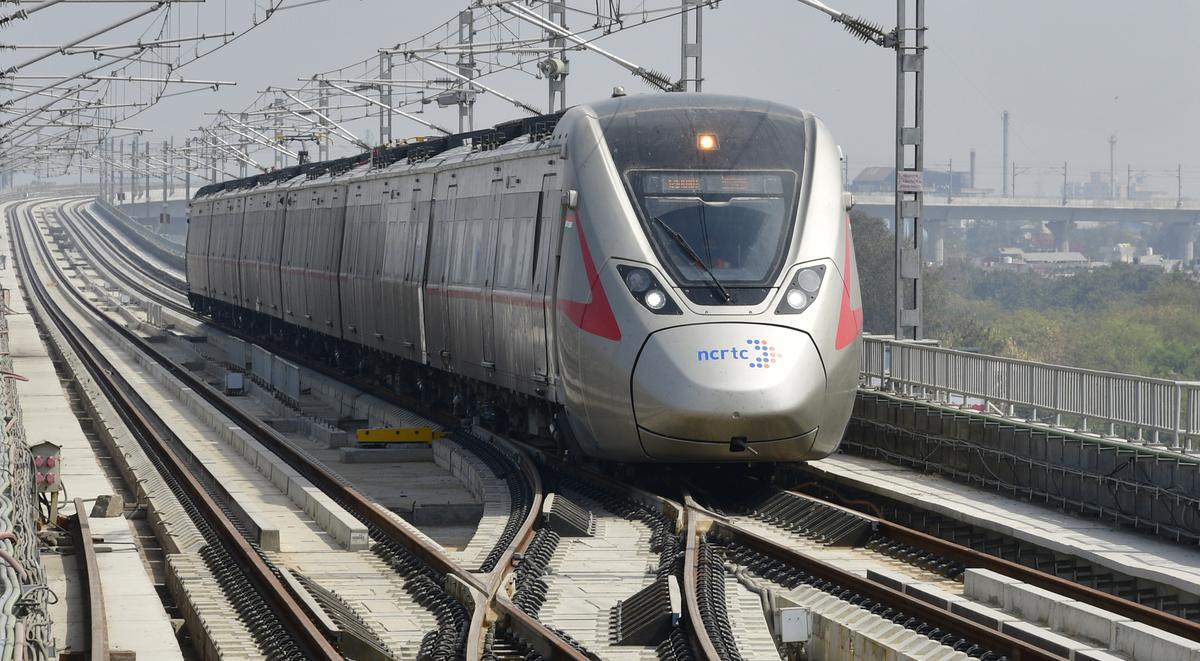- Courses
- GS Full Course 1 Year
- GS Full Course 2 Year
- GS Full Course 3 Year
- GS Full Course Till Selection
- Online Program
- GS Recorded Course
- NCERT (Recorded 500+ Hours)
- Polity Recorded Course
- Geography Recorded Course
- Economy Recorded Course
- AMAC Recorded Course
- Modern India, Post Independence & World History
- Environment Recoded Course
- Governance Recoded Course
- Science & Tech. Recoded Course
- International Relations and Internal Security Recorded Course
- Disaster Management Module Course
- Ethics Recoded Course
- Essay Recoded Course
- Current Affairs Recoded Course
- CSAT
- 5 LAYERED ARJUNA Mentorship
- Public Administration Optional
- ABOUT US
- OUR TOPPERS
- TEST SERIES
- FREE STUDY MATERIAL
- VIDEOS
- CONTACT US
Chandrayaan-3: Mapping the Lunar South Pole
Chandrayaan-3: Mapping the Lunar South Pole

Introduction
Researchers from the Physical Research Laboratory (PRL), Panjab University, and ISRO’s Laboratory for Electro-Optics Systems have created the first high-resolution geological map of the Moon’s South Pole using Chandrayaan-3’s data. The map reveals an undulating terrain of highlands and plains, highlighting potential resource locations, crater formations, and regolith composition. Using Pragyan rover’s spectral analysis, researchers examined surface composition and secondary crater ejecta, providing valuable insights into lunar geology.
Significance of the Moon's South Pole
- Permanently shadowed regions and Presence of Water Ice: Permanently shadowed regions (PSRs) remain in constant darkness, allowing water ice to persist over billions of years. This could be crucial for future space exploration, providing drinking water, oxygen, and hydrogen for rocket fuel.
- Sustained Sunlight: Certain elevated regions (e.g., Peaks of Eternal Light) receive continuous sunlight for over 200+ Earth days, making them ideal for solar energy harvesting. This makes it an ideal location for solar power generation, crucial for long-term missions.
- Scientific Exploration: Lunar regolith, impact basins, and ice deposits may preserve records of early planetary formation. Study of volatile compounds in PSRs provides clues about cometary impacts and water distribution.
- Gateway for Deep Space Missions: Establishing a lunar base at the South Pole could serve as a launch point for deeper space missions, including those to Mars and beyond. (NASA's Artemis program aims to establish a sustainable human presence on the Moon.)
- Global Interest: Space agencies, including NASA (Artemis Program), ISRO, CNSA, and Roscosmos, are focusing on the South Pole for upcoming lunar missions, aiming for scientific discoveries and resource utilization.
- Potential for Human Settlement: With water, sunlight, and essential minerals, the region holds promise for sustained human presence, making it a crucial target for future lunar colonization.
Key Lunar Missions Timeline
|
Mission |
Country |
Year |
Key Contribution |
|
Luna 2 |
USSR |
1959 |
First human-made object to impact Moon |
|
Apollo 11 |
USA |
1969 |
First human landing (Armstrong & Aldrin) |
|
Lunar Prospector |
USA |
1998 |
Indirect evidence of water ice at poles |
|
Chang’e 1 |
China |
2007 |
High-resolution lunar mapping |
|
Chandrayaan-1 |
India |
2008 |
Confirmed water molecules on the Moon |
|
Chang’e 4 |
China |
2019 |
First far-side Moon landing |
|
Chandrayaan-2 |
India |
2019 |
Orbiter operational, Vikram lander experienced a hard landing |
|
Chandrayaan-3 |
India |
2023 |
First soft landing at South Pole |
|
Luna 25 |
Russia |
2023 |
Attempted but failed South Pole landing |
|
SLIM |
Japan |
2023 |
First pinpoint soft landing |
|
Artemis II & III |
USA |
2024+ |
Crewed missions, first woman on Moon |
India’s Contributions to Lunar Science
- Chandrayaan-1 (2008): Confirmed water molecules on the Moon using NASA’s M3 instrument.
- Chandrayaan-2 (2019): Orbiter continues to provide high-resolution data on lunar composition.
- Chandrayaan-3 (2023): First soft landing near the South Pole, detecting sulfur and other elements.The landing site, named 'Shiv Shakti Point,' marks India's first successful lunar landing.
Mapping Lunar Geology: Insights from Chandrayaan Data
Magma Ocean Evidence
- Pragyan rover’s data supports the hypothesis of a subsurface magma ocean in early lunar history.
- Previous missions suggested partial molten layers, but Chandrayaan-3 confirms localized magma presence.
Precise Dating
- Crater analysis reveals that parts of the lunar south pole date back 3.7 billion years, offering insights into early solar system conditions.
- The Moon’s airless environment preserves impact basins, making them valuable chronometers for studying planetary evolution.
Common Earth–Moon Roots
- These findings reinforce the giant impact theory, which posits the Moon formed after a Mars-sized object collided with early Earth.
- Complementary isotopes and similar orbital characteristics highlight the shared origin and evolutionary path of both celestial bodies.
Regolith Disturbance
- Increased lunar landings can disturb surface regolith, releasing dust and altering volatile distribution, potentially affecting future studies.
- Such disturbances complicate scientific measurements and raise concerns about resource exploitation, prompting calls for responsible exploration.
Future Considerations for Lunar Exploration
As lunar exploration progresses, several key considerations will shape the future of research and development at the Moon’s south pole:
- Sustainable Resource Utilization
- Water ice extraction for life support and fuel production.
- Development of lunar mining technologies to harness essential minerals.
- Strategies to prevent resource depletion and environmental contamination.
- Lunar Habitat Development
- Establishment of permanent research stations for scientific study.
- Advanced radiation shielding and thermal insulation techniques.
- Autonomous construction methods using lunar regolith.
- Technological Advancements
- AI-powered robotic systems for navigation and construction.
- Enhanced solar power harvesting in regions with sustained sunlight.
- Efficient thermal management for extreme lunar temperatures.
- International Collaboration
- Coordination between ISRO, NASA, CNSA, ESA, and private companies.
- Development of shared infrastructure, such as lunar bases and power grids.
- Standardized regulatory frameworks for peaceful and equitable lunar exploration.
- Scientific Exploration and Astrobiology
- Further investigation of ancient magma oceans and lunar geology.
- Deep-core drilling to analyze the Moon’s internal structure.
- Study of potential microbial life signatures preserved in regolith.
- Challenges and Risk Mitigation
- Ensuring safety measures for long-duration human missions.
- Mitigating the impact of increased lunar traffic on scientific studies.
Conclusion
Chandrayaan-3’s historic South Pole landing has advanced India’s role in global lunar exploration. The discovery of sulfur, potential water ice, and geological insights strengthens future lunar colonization efforts. With upcoming missions like LUPEX and Chandrayaan-4, ISRO aims to deepen scientific understanding and expand space collaboration. The Moon’s South Pole is set to become a hub for resource extraction, habitat construction, and deep-space exploration, positioning India at the forefront of sustainable lunar exploration.
|
About Indian Space Research Organisation (ISRO)
|
|
About Chandrayaan-3 Mission
|
Future Lunar Missions
|
|
Also Read |
|
| FREE NIOS Books | |



